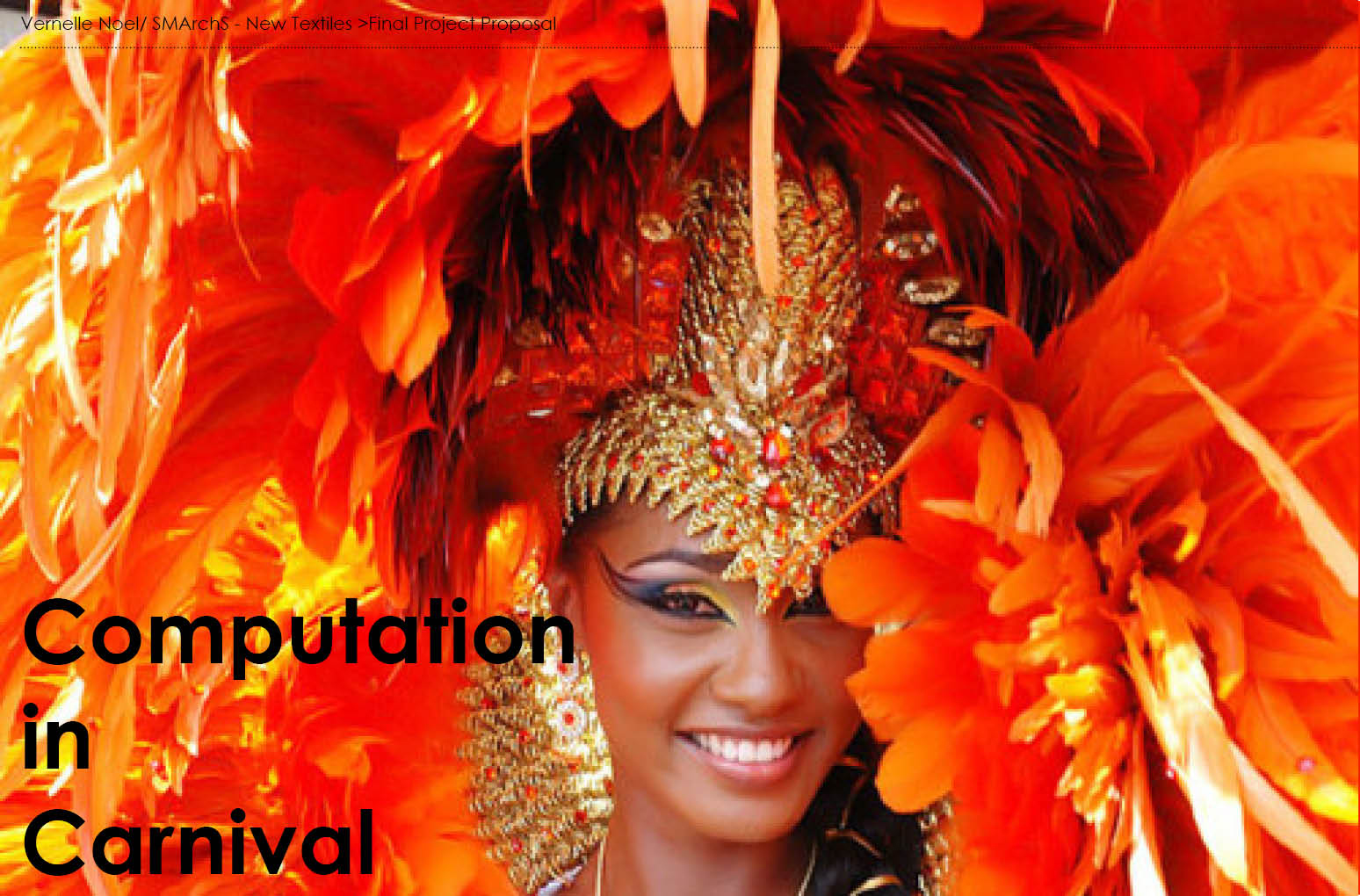Final Project Proposal – Computation in Carnival
by Vernelle Noel
Trinidad & Tobago is the land of steelpan (steeldrums), calypso (soca) and limbo; and our carnival is unique. More than 29 carnivals in the United States, more than 52 in England, 7 in Canada, and 4 throughout Europe are the product of Trinidad and Tobago’s Diaspora and are now welcomed by the larger populations in their adopted homes. This makes Trinidad and Tobago’s carnival the world’s most globalized festival. It is one of the most significant features on the cultural landscape and history of Trinidad & Tobago.In order to put a carnival band together, it takes many months and weeks of welding; sewing; gluing; applying feathers, sequins, foil papers, glitter and lots of creativity, energy, and patience. The larger costumes are usually more difficult to design and build. Huge frames are created by bending wire into shapes, then covering with papier mâché, foam, and other materials. The costume must be able to move and dance across stages and streets, and not fall apart. Many different forms of decorations and materials (natural and man-made) are used to transform the costume into a dream of the mind’s eye. Created primarily from wire, netting, foam, and paint, these awesome costumes mesmerize and dazzle spectators.
For my Final project I will like to explore the employment of computational techniques in the design of Carnival costumes.
